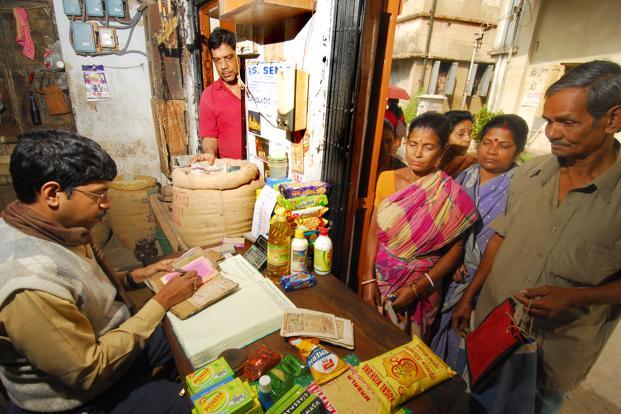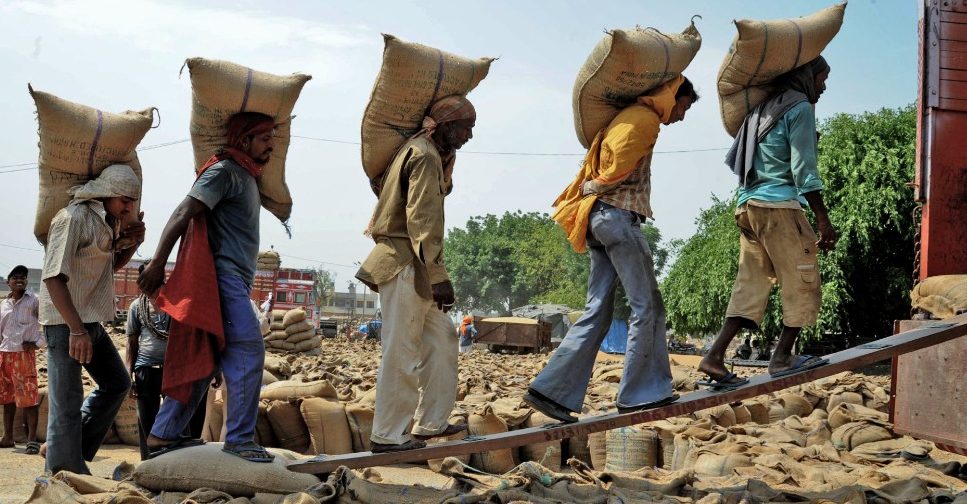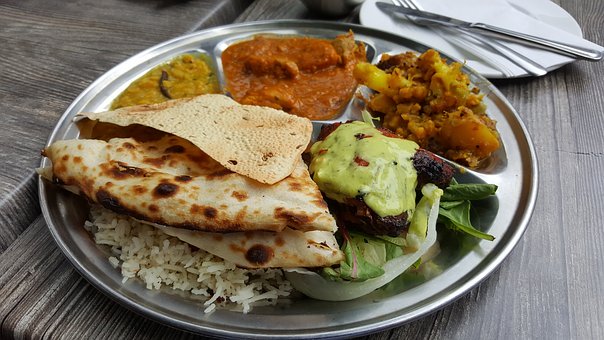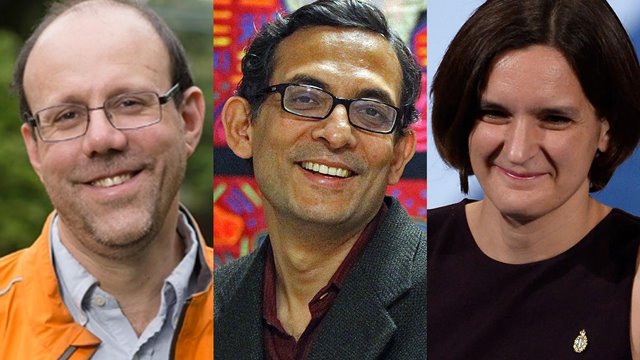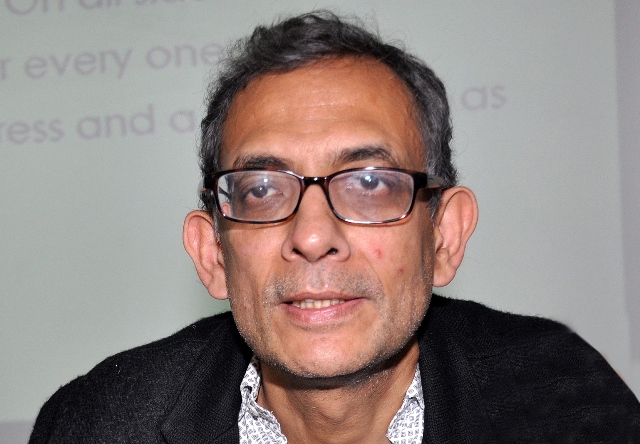The announcement of the NYAY Scheme by the Congress has generated both appreciation and condemnation. Does the middle class hold a greater responsibility for economic inequality in the nation?
Harshvardhan is pursuing his Ph.D in Sociology from JNU.

[dropcap]I[/dropcap]t was only recently that the Congress party announced its NYAY Scheme, according to which the bottom 20% of the Indian population will get Rs. 72,000 per annum if the party is elected to power in the 2019 Lok Sabha elections. Following the announcement, there has been uproar in the public sphere with politicians, academicians, journalists and members of civil society voicing their opinion and debating over the pros and cons as well as the viability of such a scheme.
Apart from being debated and discussed in newsrooms and newspaper columns, the proposed scheme is also being debated and discussed by the general public on various platforms. Few days ago, the #CongressHatesMiddleClass was trending on Twitter, while countless memes on the issue are floating in social media. Though the hashtag was being run by the BJP and its IT Cell, we cannot simply deny the fact that the middle class does consider schemes of social welfare like free healthcare, state sponsored education or loan waivers to farmers as ‘anti-middle class’.
The loan waivers given to farmers in Madhya Pradesh, Rajasthan and Chhattisgarh by the Congress government after it came to power in November 2018 drew hostile responses from the middle class as well as the rich, alleging victimization. They argued that such policies went against their welfare because they (the population of the nation which constitutes taxpayers) will have to bear the burden of these schemes.
In fact, the world ‘taxpayer’ has been reduced into a rhetoric and particularly after the infamous JNU February 2016 incident, when a lot of people- majority of them being from the middle class- raised their concerns over taxpayer’s money being wasted in institutions like JNU, which produced ‘anti-nationals’, or did not contribute anything ‘constructive’ to society, etc.
How to understand this disdain of a certain section of the middle class against measures of social welfare which they think is waste of ‘taxpayers’ money? What is the problem in recognizing that quality education and health is something which must be available to everyone irrespective of how economically well-off they may be? Are the middle classes anti-poor or do they lack both sympathy and empathy towards people, or it is just their political inclination which compels them to take an attitude which is basically anti-poor?
In order to understand this worldview of the middle classes we need to look at the socio-economic factors which shape their ideology or world view i.e. their attitude to the specific problem of ‘social welfare’.
Let us try to understand the socio-economic-ideological world in which they live.
- This is the class which takes up salaried and fixed hour jobs. Due to the continuous withdrawal of social welfare schemes under the ideological framework of neo-liberalism which calls for privatization of every sphere of society, people from the middle class have to bear the brunt of ever increasing cost of both health and education.
- Sometimes they have to take loans to fund their studies. Apart from these things, the middle class is also the section of the population on which tax is levied ‘directly’. The rising fuel prices, as well as heavy taxes on luxury items hits them hard, so does the rising cost of living in urban centers, they were also morally compelled by the present regime to “give off” various subsidies in favor of poor.
All these factors lead to a self-understanding, according to which they think they are the worst lot and develop a sense of victimization vis-à-vis the poor class, because in their self-understanding they work hard and simultaneously have to part with their hard earned money, while the poor get it for ‘free’ under various schemes of social welfare.
This class thinks that it is the primary contributor towards the government’s income or the national wealth. It is the tax levied from their pocket which runs the country, and is subsumed under the rhetoric of ‘taxpayer’.
It is the taxpayer’s money which is used to fund social welfare schemes for poor people who are lazy and thereby, these schemes are a total waste of money. However, they fail to count the tax levied on daily items of consumption like toothpaste, soaps, and food items, etc., i.e. the indirect taxes which are basically paid by everyone. The contribution of Income Tax was 16% while that of Indirect Taxes was 10% towards the total income of the Indian Government in the financial year 2017-18. So basically everyone contributes to the treasury of the Indian Government.
Another fundamental problem in the world view of the middle class in terms of recognizing the ‘Rights’ of common people. They fail to understand that each and every person of this country- including them- have equal right over the natural resources of this country and they don’t lose their share of the natural resources once these are given to private corporations for exploitation. No one can claim absolute ownership over the resources of the country unless everyone does so. In not recognizing the right of poor people over the resources, they are also alienating themselves from the resources of this country.The middle class has to suffer because their hard earned money is given to poor, lazy farmers as loan waivers.
However, they are not able to react in a similar way to “tax-waive offs”- which usually runs in tens of thousands of crores- given to multinational corporations. The reason for this cognitive dissonance is twofold a) they think that multinational corporations embody hard work- just like themselves- and provide jobs so they ‘deserve the reward’ and b) they aspire to become that class, which is manifested in the desire of becoming an entrepreneur.
Neoliberalism continuously strives to convert every aspect of social life into a commodity. What was earlier considered as a basic right of human beings i.e. health, education, and employment, etc. becomes a commodity under neo-liberalism. You have to pay for everything and you are basically responsible for your existence, the state has no role to play in the lives of common people. You need to have a specific combination of education and employment if you want to qualify as a hard worker. If you are working in a corporate office, you are a hard working person, but if you work in the public sector you are basically lazy and corrupt. White collar labor is privileged over pink-collar work, which is privileged over blue-collar work, while farming is at the bottom of the hierarchy.
Neo-liberal ideology irons out all the socio-economic-cultural differences resulting from caste, gender, class, region, religion differences and places everyone on one single platform and then judges the success and failures of various actors through the concept of ‘competition’ and ‘merit’. Both failure and success are attributed to the individual, without taking into consideration the specific socio-economic conditions of the actors. In doing so the neo-liberal ideology not only does symbolic violence over weaker sections of the population but also on the middle classes. The middle classes have internalized the neo-liberal ideology to a large extent which has resulted in their alienation from certain basic rights like health, education and employment.
In such a scenario, it becomes important that the middle class undergoes a process of reflexivity and critical thinking as far as understanding of certain basic rights like education, health, employment, and housing goes. Rather than criticizing and expressing a hostile attitude towards schemes of social welfare directed towards the poor section of the population, the middle class should demand inclusion, extension and expansion of social security nets for everyone. We live in a nation where the top 1% of the population owns 73% of the total national wealth, if we as a nation don’t work towards economic inclusivity who else will?

